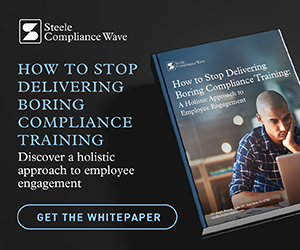 Purists of a certain sort will argue (as purists are wont to do) that the ne plus ultra of adaptations of Charles Dickens’ A Christmas Carol is the 1951 film version starring Alastair Sim as Ebenezer Scrooge. I beg to differ, as my kids and I have been watching the Mr. Magoo version again lately, and I find that the sound of Jim Backus’ voice is deeply tied up in my psyche with the aesthetic of the holiday season. Plus there are some really wonderful songs in that cartoon! (“Ringle, ringle, coins when they mingle make such a lovely sound…”)
Purists of a certain sort will argue (as purists are wont to do) that the ne plus ultra of adaptations of Charles Dickens’ A Christmas Carol is the 1951 film version starring Alastair Sim as Ebenezer Scrooge. I beg to differ, as my kids and I have been watching the Mr. Magoo version again lately, and I find that the sound of Jim Backus’ voice is deeply tied up in my psyche with the aesthetic of the holiday season. Plus there are some really wonderful songs in that cartoon! (“Ringle, ringle, coins when they mingle make such a lovely sound…”)
But no matter! Whatever version compels you, compliance and ethics professionals should take careful note of this tale. Why? Because corporate compliance and ethics is fundamentally about changing behavior. (Of course it is also very much about tracking, testing systems that track, and investigating behavior, but in the first instance it is about exerting an influence on employees’ behavior.) And this is one story, albeit a fictional one, which illustrates just how powerful behavior-change strategies can be when applied intelligently.
We know from what is revealed about Scrooge’s early life that he has come to associate great pain with his relationships with other people, and that he has learned to associate a kind of pleasure – or at least a kind of pain-avoidance – with his relationship with money. From a neuroassociative conditioning (NAC) perspective, which posits that we will act primarily to avoid pains and gain pleasures – quite frequently motivated at deep, unconscious levels of our nervous systems, it’s difficult to imagine Scrooge acting any other way. That is, until his pleasure/pain associations get realigned which, we see, can happen almost instantly when he hits a point of emotional leverage.
This is not my own observation. The major popularizer of NAC, peak-performance coach Tony Robbins, has pointed out that the three spirits who visit Scrooge in the early hours of that fateful Christmas morning were top-level neuroassociative conditioning experts. They understood that if they could get Scrooge to associate real pain with his alienation from others (like what happens to Tiny Tim if Scrooge continues to keep Cratchit in a state of poverty), and real pleasure with social connections he once enjoyed (like the joys he experienced working for the kind Fezziwig), then he would desire to change his behavior. The technique works almost instantaneously.
There is so much evidence that this works in non-fictional contexts. From the field of behavioral psychology to the field of marketing, huge strides have been made based on this principle. The relatively high levels of success experienced in 12-step programs that treat addiction are a great example. Alcoholics (to grossly simplify a complex issue) associate pleasure with the next drink and pain with not getting it. When they change those associations and refocus on the long-term impacts of their behaviors, such that they associate more pain with having the drink and hurting those around them and more pleasure with staying sober, real and lasting change becomes possible. On the more mercenary side, marketers are absolute experts in manipulating consumers to associate pleasure with products and ever increasing amounts of pain with not having those products. What else could account for the amount of junk that most of us willingly buy?
In compliance we can get similar results by employing similar methodologies. We should contemplate these questions:
Do our compliance communications tell employees what they are supposed to do, or do they clearly help them associate pain with doing the wrong thing and pleasure with doing the right thing?
In other words, the three spirits could have just issued a memo simply explaining that it was their policy that he behave nicely toward others and that he not be overly focused on his money. But his behavior change depends on his seeing the consequences of his behavior played out in the world, and his deep understanding that he was on the road to deeper pain unless he were to change his approach. Employees need to see and believe in the potential negative consequences of non-compliant behavior – particularly negative social consequences; the desire to avoid this has been proven to be one of the most powerful drivers of behavior. But they also should see the very positive results of staying on the compliant route – again, positive social results are very powerful motives (e.g. your good reputation will remain intact, your coworkers will trust you, you will be seen as a person of integrity). When these outcomes are reinforced, behavior-change is much easier to effect.
To the extent that our communications leverage fear, do they play on extrinsic or intrinsic fears?
For example, if three spirits were to visit me in the night, I’d probably do most anything they told me to – within a range of things I might reasonably do; at least for a while I would be acting out of terror. But if they never showed up again I’d probably fall back to my old habits, convinced that the apparitions hadn’t been real, etc. This is kind of the effect you’ve experienced many times on the highway; you slow down for a while after seeing a cop and then, when you don’t get pulled over, you shortly resume speeding along down the road. When compliance messages focus on the idea that we might get “caught” doing something wrong, we are motivated by that as long as we think that getting caught is a real threat. But it isn’t really even the “getting caught,” per se, that motivates in the long run. It’s the consequences to our careers, our reputations, and our families that really matter – even in cases when we are not caught. It’s seeing those consequences that most help to create associations between pain and non-compliance. We should focus our messages here, too.
And at the simpler end of the spectrum: Are our compliance communications boring or are they interesting?
Reading memos and policy documents, or clicking through long, tedious elearning modules is boring. Boring equals pain. Shorter, lighter treatments that incorporate stories, humor, etc., can be fun. Fun equals pleasure. If your employees associate pain with compliance, they will try to stay away from it. If the spirits had brought Scrooge a several-page policy to read, he would simply have pulled his pillow over his head and gone back to sleep. Employees do not have to associate pain with compliance communications.
There is so much more here, but there are only so many hours before the spirits depart and morning arrives. In the meantime, don’t forget what Dickens taught us; that a small number of thoughtful communications – leveraging the incredible power of pleasure/pain associations – can create powerful, lasting behavior change.
COMPLIANCE COMMUNICATIONS TIP: Like all behaviors, employees engage in non-compliant actions because, at a deep level, they associate pleasure with those behaviors and/or pain with compliant behaviors. We can use our compliance communications to help employees see – and really feel – that non-compliant behaviors always lead to more pain, and compliant behaviors always lead to more pleasure.




